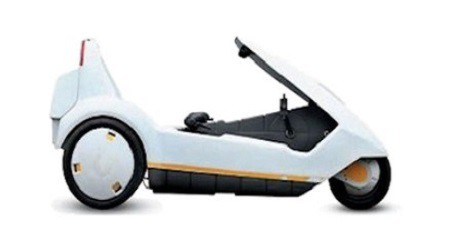Consumer electronics tycoon Sir Clive Sinclair had long considered making silent, emissions-free electric vehicles.

Sinclair C5 1985
- YEAR REVEALED 1985
- PLACE OF ORIGIN Warwick, Warwickshire, and Merthyr Tydfil, South Wales, UK
- HISTORICAL STATUS production “car”
- ENGINE electric motor
- MAXIMUM POWER unknown
- LAYOUT rear-mounted engine driving one rear whee
- BODYWORK doorless/open, single-seater buggy
- TOP SPEED 15mph (24kph)
- NUMBER BUILT approximately 12,000
In August 1983, new rules came into force allowing “electrically assisted cycles” to hit the road with no driver’s license, tax, insurance, or even helmet needed; they simply had to weigh under 132lb (60kg) and not exceed 15mph (24kph).
Sinclair saw his chance, recognising that nothing prevented such a vehicle from being a tricycle. After selling shares in Sinclair Research to raise funds of £12 million, he formed Sinclair Vehicles, and hired Lotus to coordinate the engineering. It required a new 12-volt deep discharge lead-acid battery, and a small Italian electric motor.
Handlebars mounted under the rider’s thighs were for steering. The low-drag, upper body was remarkable: the largest single plastic injection-molding ever offered in a consumer product. Christened the Sinclair C5, it was launched in London on January 10, 1985, at £428, including mail-order delivery.
However, the C5 rolled into immediate controversy. Safety campaigners condemned it as unsafe and-in the British climate-uncomfortable. Some jibes were unfair, however; it didn’t have a washing-machine engine despite being assembled by Hoover, and was a bicycle or moped alternative, not a surrogate car. Manufacture stopped in August 1985, and Sinclair Vehicles went into receivership afterward. The C5’s failure scuppered a whole range of planned Sinclair electric vehicles.